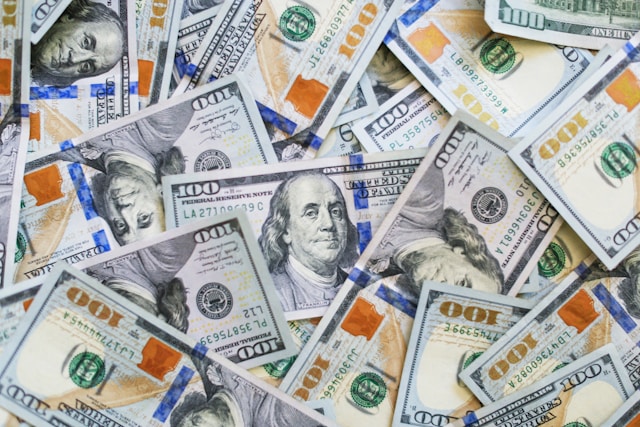Cash flow is the lifeblood of any startup. Yet, more than 70% of startups run out of money before they can achieve sustainable growth. The problem? Many founders focus solely on growth while ignoring their burn rate.
For most startups, running out of cash isn’t just a possibility—it’s the single most common reason they fail. While growth metrics like revenue, user acquisition, and market share often steal the spotlight, the less glamorous burn rate quietly determines whether a business survives long enough to scale.
The tension between burn rate (how much money you spend) and growth rate (how fast your business expands) defines the financial health of a startup. Get it right, and you’ll build a sustainable business. Get it wrong, and even the most promising startup can collapse.
In this guide, we’ll explore how founders can balance these critical metrics, ensuring they have the runway to achieve meaningful growth.
What is Burn Rate, and Why Does It Matter?
Burn rate is the amount of cash your startup spends each month to operate. It’s typically expressed in two ways:
- Gross Burn: Total monthly expenses, including payroll, rent, marketing, and other operating costs.
- Net Burn: Monthly cash outflow minus any incoming revenue.
Why it matters: Your burn rate directly determines your runway—the number of months your startup can survive before running out of cash. Without a clear understanding of your burn rate, you risk depleting your resources faster than you can secure additional funding or achieve profitability.
Formula:
Runway = Current Cash Balance ÷ Net Burn Rate
Example:
If your startup has $500,000 in the bank and a net burn rate of $50,000 per month, your runway is 10 months.
What is Growth Rate, and Why Does It Matter?
Growth rate measures how quickly your business is expanding, often expressed as a percentage increase in key metrics like revenue, customer base, or market share over a specific period.
Why it matters: Growth is essential for attracting investors, capturing market share, and building momentum. However, unprofitable growth—spending heavily to grow without improving margins—can drain your cash reserves and increase your burn rate unsustainably.
The Balance: Burn Rate vs. Growth Rate
Founders often face a critical question: Should you prioritize rapid growth, even if it increases your burn rate, or should you focus on extending your runway by keeping expenses low?
The answer lies in understanding the relationship between these metrics and aligning them with your stage of growth:
- Early Stage: Focus on controlling your burn rate to extend runway. Prove product-market fit before aggressively scaling.
- Growth Stage: Invest strategically in growth, but ensure unit economics (customer acquisition cost vs. customer lifetime value) are sustainable.
- Scaling Stage: Optimize efficiency to lower your burn multiple while maintaining high growth.
5 Principles for Managing Burn Rate and Growth Rate
1. Know Your Runway
Your runway is your survival clock. Calculate it monthly to understand how much time you have to achieve key milestones or secure funding.
Example:
If your burn rate increases due to hiring, adjust your budget to ensure your runway aligns with your next funding milestone.
2. Focus on Revenue-Generating Activities
Every dollar spent should contribute to growth or revenue generation. Vanity metrics like downloads or impressions don’t pay the bills—focus on activities that drive conversions.
Key Areas to Prioritize:
- Improving customer acquisition and retention.
- Enhancing product features to increase customer lifetime value (LTV).
3. Keep Your Burn Multiple Low
Your burn multiple shows how efficiently you’re converting spending into growth. A high burn multiple signals inefficiency and unsustainable spending.
Formula:
Burn Multiple = Net Burn Rate ÷ Net New Revenue
Example:
If you’re burning $50,000 per month and generating $25,000 in new revenue, your burn multiple is 2—a red flag. Aim for a burn multiple below 1.5 for healthier growth.
4. Invest Strategically in Growth
Spending for growth without understanding your unit economics is a recipe for disaster. Only scale when your customer acquisition cost (CAC) is lower than your customer lifetime value (LTV).
Example:
If your CAC is $300 and your LTV is $250, you’re losing $50 per customer. Focus on improving retention or reducing CAC before scaling.
5. Adapt During Crisis
If cash flow becomes tight, act quickly to reduce your burn rate. Cutting costs early is far less painful than waiting until it’s too late.
Examples of Quick Wins:
- Freeze non-essential hiring.
- Negotiate with vendors for better payment terms.
- Scale back marketing campaigns that aren’t driving conversions.
Tools and Leverage for Managing Cash Flow
Here are tools and strategies to help you balance burn rate and growth rate:
- Cash Flow Management Software: Tools like QuickBooks or Xero can help track expenses and project your runway.
- Revenue Analytics Platforms: Use platforms like ChartMogul or Baremetrics to monitor key metrics like MRR (Monthly Recurring Revenue), churn, and CAC.
- Scenario Planning Tools: Tools like LivePlan or Foresight allow you to simulate different burn and growth scenarios.
- Budgeting Tools: Apps like Mint or Expensify can help track and manage operational spending.
Practical Steps You Can Take Today
- Runway Check: Calculate your current runway based on your burn rate and cash balance. Adjust spending as needed to align with your growth goals.
- Burn Multiple Analysis: Use your last three months of data to calculate your burn multiple. Identify areas of inefficiency.
- Audit Expenses: Review all current expenses and eliminate anything that doesn’t directly contribute to revenue or product improvement.
Reflection Prompt
Are you growing at a sustainable pace, or is your burn rate setting your business up for failure?
Closing Thoughts: Why Balance is Key
In the race to scale, many founders prioritize growth at the expense of cash flow discipline. But reckless spending leads to short-lived success.
Balancing burn rate and growth rate isn’t just about survival—it’s about building a business that thrives long-term. As you grow, remember: Sustainable startups focus not just on how fast they grow, but how efficiently they do it.
Master this balance, and you’ll not only extend your runway—you’ll build a company that lasts.



